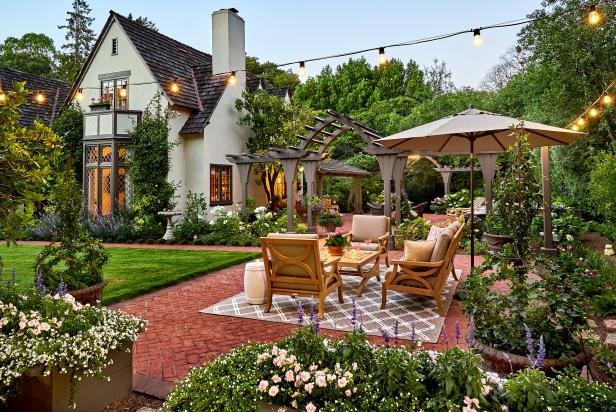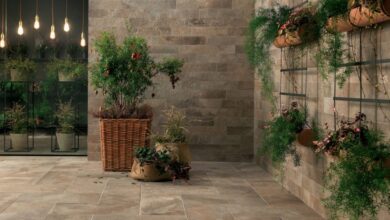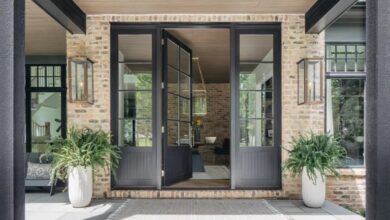Creating Stunning Outdoor Spaces with Landscaping

Did you know that well-landscaped homes have a 15% higher property value? Investing in professional landscaping services not only enhances your curb appeal but also boosts your home’s worth. Whether you want to create a stunning outdoor oasis or maintain a neat and tidy garden, landscaping services can transform your space. From lush gardens to functional outdoor living areas, professionals can bring your vision to life. Discover the endless possibilities of landscaping services and elevate your property today.
Key Principles of Landscape Design
Balance is crucial in landscape design, achieved through a blend of symmetry and asymmetry. By strategically placing plants symmetrically on either side of a focal point, a sense of order and stability is created. However, incorporating asymmetry adds interest and prevents monotony.
To emphasize balance, consider the weight and visual impact of each element. For instance, a large tree on one side can be balanced by several smaller shrubs on the other side. This creates a visually appealing composition that feels harmonious yet dynamic.
Unity in Design
Creating unity in landscape design involves selecting a cohesive color palette and materials to tie the elements together. By repeating colors, textures, or materials throughout the landscape, you establish a sense of continuity and coherence.
To achieve unity, choose a color scheme that complements your home’s exterior or the surrounding environment. For example, if your house has warm-toned bricks, selecting plants with similar hues can create a seamless transition from indoors to outdoors.
Scale and Proportion
Scale and proportion are essential considerations to ensure that all elements within the landscape fit harmoniously within the space. Pay attention to the size of plants, hardscape features, and outdoor furniture relative to one another.
When designing a small garden, opt for smaller plants and furniture to maintain a sense of proportion. Conversely, in larger spaces, incorporating taller trees or structures can help fill the vertical space and prevent the area from feeling empty.
Practical Tips for Stunning Landscape Design
Select native plants that thrive in the local climate. This choice ensures low maintenance and promotes sustainability. Native plants are accustomed to the area’s weather conditions, reducing the need for excessive watering or special care. They also attract local wildlife, contributing to a healthy ecosystem.
When choosing plants, consider factors such as sunlight exposure, soil type, and water requirements. By incorporating native plants into your landscape design, you can create a vibrant and thriving garden that harmonizes with the surrounding environment.
Layering Techniques
Utilize layering techniques to add depth and visual interest to your garden. Start by placing taller plants at the back and shorter ones at the front to create a sense of perspective. Incorporate a variety of textures and colors to enhance the overall look.
Layering also helps in maximizing space and creating different focal points throughout the garden. By strategically arranging plants in layers, you can achieve a well-balanced and visually appealing landscape design.
Focal Points
Introduce focal points such as sculptures, water features, or unique plant specimens to draw attention and elevate the design. Focal points serve as centerpieces that anchor the entire landscape, guiding the viewer’s gaze and adding a touch of personality.
When selecting focal points, consider elements that complement the overall theme of your garden. For example, a sculptural fountain can create a sense of tranquility, while a striking piece of artwork can add an artistic flair. These focal points not only enhance the visual appeal but also create memorable experiences for visitors.
Conducting a Site Survey
Assess sunlight exposure to determine the best areas for plant placement and ensure optimal growth conditions. By understanding the sunlight patterns, you can strategically position plants to thrive.
Evaluate the area’s soil quality and drainage system to select plants that will thrive in the specific conditions of your space size. This information is crucial for maintaining a healthy landscape that will flourish over time.
Existing Structures
Identify existing structures and natural features on the site that could impact your landscaping choices. Incorporating these elements into your design can add value and enhance the overall aesthetic appeal of your outdoor space.
Creating a Base Plan
Having a solid base plan in place is crucial for the success of any project.
- Define your goals for the project.;
- Identify the resources needed to achieve those goals.;
- Establish a timeline for completing each task.;
- Delegate responsibilities to team members.;
- Monitor progress and make adjustments as necessary.
To kickstart the landscaping process, develop a scaled drawing that serves as the foundation for your project.
More information can be found on our website: https://avantilandscaping.ca/swimming-pool-installation-toronto-gta/
Identifying Outdoor Activities and Uses
When designing a landscape, it’s crucial to identify how the outdoor space will be utilized. Whether it’s for entertaining guests, engaging in gardening activities, or simply as a tranquil spot for relaxation, understanding the primary function of the area is key.
Considering family needs and preferences is essential in tailoring the landscape design to cater to specific activities. By aligning the outdoor space with the interests and requirements of the household members, the area can become a functional and enjoyable extension of the home.
Planning Functional Zones
To optimize the usability of the outdoor area, planning distinct zones within the yard is necessary. Creating designated spaces for various functions such as dining, lounging, or recreational activities helps in maximizing the utility of the landscape.
By segmenting the outdoor space into different areas based on their intended use, homeowners can create a versatile environment that accommodates a range of activities. This zoning approach not only enhances the functionality of the yard but also contributes to a well-organized and aesthetically pleasing outdoor setting.
Incorporating Environmental Factors
When designing outdoor landscapes, it’s crucial to consider environmental factors such as water usage and drainage. Understanding how water accumulates in different areas of the yard over the years is essential for creating solutions that prevent issues like flooding or water stagnation.
From Design to Installation
Collaborate with design professionals to ensure that the landscaping designs are not only aesthetically pleasing but also feasible and align well with the client’s expectations. By involving experts, you can benefit from their expertise in creating functional and visually appealing outdoor spaces.
Working closely with professionals will help in incorporating essential elements such as proper lighting, efficient drainage solutions, and well-designed pathways. Their input can enhance the overall functionality of the landscape, ensuring that it serves the needs of the homeowner effectively while adding an artistic touch to the space.
Managing the Installation Process
Create a detailed timeline for the installation process to manage different project phases effectively. This step-by-step approach helps in coordinating various tasks involved in the installation, ensuring that each aspect is completed efficiently and on time.
By breaking down the installation process into manageable steps, you can monitor progress closely and address any issues or delays promptly. This proactive approach allows for a smoother execution of the project, leading to timely completion and overall perfection in the final outcome.
Sourcing Quality Materials
rce high-quality materials and plants that not only match the design vision but also fit within the allocated budget. Choosing the right elements for the landscaping project is crucial in achieving a cohesive and visually appealing outdoor space.
Selecting quality materials ensures durability and longevity, reducing the need for frequent maintenance or replacements. By investing in well-crafted components, you can create a landscape that stands the test of time and continues to enhance the overall aesthetic of your property.
Closing Thoughts
In mastering the key principles, applying practical tips, and executing effective techniques outlined in this guide, you’ve equipped yourself with the tools needed to transform your landscape dreams into reality. By conducting thorough site surveys, creating detailed base plans, and integrating innovative features, you’ve laid a solid foundation for a stunning outdoor space that reflects your style and purpose. From design inception to final installation, each step has been crucial in achieving a landscape that not only enhances your property but also enriches your lifestyle.
Now that you’ve unlocked the secrets to exceptional landscape design, it’s time to roll up your sleeves and start planning your outdoor oasis. Take the knowledge gained here and let your creativity flourish. Whether you’re aiming for a serene retreat or an entertainment hub, remember that with dedication and the right approach, your landscape can become a masterpiece that brings joy and relaxation to you and your loved ones.



